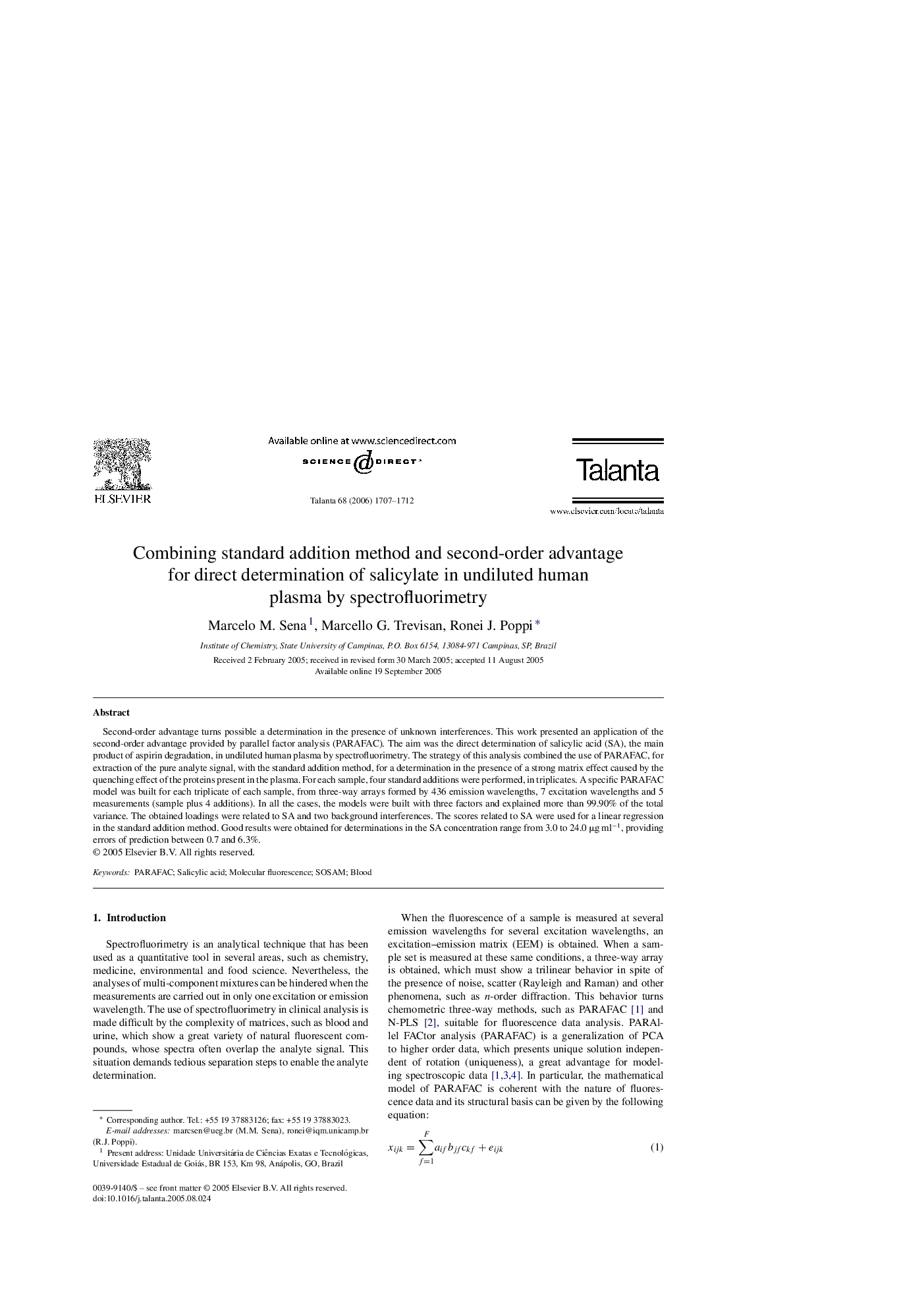| Article ID | Journal | Published Year | Pages | File Type |
|---|---|---|---|---|
| 1246592 | Talanta | 2006 | 6 Pages |
Second-order advantage turns possible a determination in the presence of unknown interferences. This work presented an application of the second-order advantage provided by parallel factor analysis (PARAFAC). The aim was the direct determination of salicylic acid (SA), the main product of aspirin degradation, in undiluted human plasma by spectrofluorimetry. The strategy of this analysis combined the use of PARAFAC, for extraction of the pure analyte signal, with the standard addition method, for a determination in the presence of a strong matrix effect caused by the quenching effect of the proteins present in the plasma. For each sample, four standard additions were performed, in triplicates. A specific PARAFAC model was built for each triplicate of each sample, from three-way arrays formed by 436 emission wavelengths, 7 excitation wavelengths and 5 measurements (sample plus 4 additions). In all the cases, the models were built with three factors and explained more than 99.90% of the total variance. The obtained loadings were related to SA and two background interferences. The scores related to SA were used for a linear regression in the standard addition method. Good results were obtained for determinations in the SA concentration range from 3.0 to 24.0 μg ml−1, providing errors of prediction between 0.7 and 6.3%.
